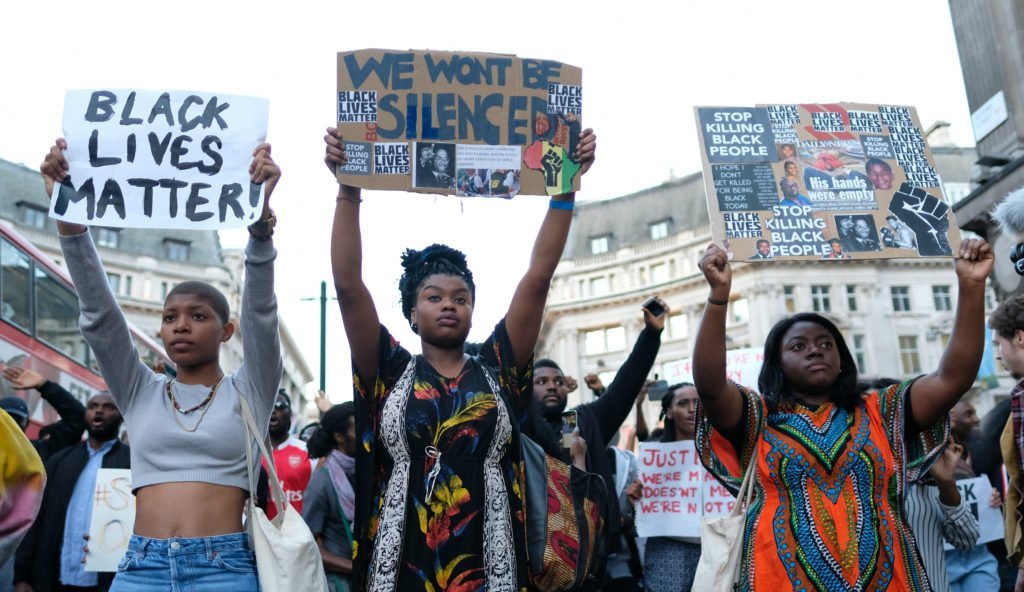The U.S. is truly a melting pot of various people with different ideas, religions, cultures, races and many unique attributes that make for a very dynamic society.
Some believe that this very diversity is what makes the U.S. great, some believe the opposite. What is true is that this diversity creates many challenges and often great conflict. In this regard, the US crime statistics are really worrying.
As a result, over time, laws have been enacted to discourage unreasonable behaviors. California has enacted not only anti-discrimination laws, but also hate crime laws. Other states have done likewise.
What Is Hate Crime?
Hate crime is also referred to as a bias-motivated crime. Sometimes the perpetrators attack the victim because of his or her membership or perceived membership of a group.
Some of these characteristics could be sexual orientation, religion, nationality, ethnicity or even gender. Sometimes these haters take non-criminal actions when pushed by any of these reasons. This type of action is called a bias incident.
US Court System has made laws to protect citizens against such crimes. Even though these laws vary slightly in different states, they all consider characteristics like disability, gender identity, sexual orientation, gender, race, religion, ethnicity, and nationality of both the perpetrators and victims in the adjudication of hate crime cases.
It is usually advisable to report such crimes and hate incidents because you may be preventing these incidents from either happening to you or someone you love.
Apart from that, when you report a crime it helps the authorities to figure out the extent of the crime in your locality or community and begin to curtail it.
Hate Crime Laws
Hate crime laws are very important and they should always take their course. This is because when they occur without being addressed the victim or their locality, or people with similar characteristics (depending on what motivated the crime) that feel concerned may decide to take reprisal attacks since attacks beget attacks.
And, if not curbed, it could lead to a vicious cycle of attacks that may lead to communal or group clash and this leads to wanton destruction of properties. Needless to say, inter-group tension and violence are very difficult to contain.
For instance, since there is freedom of speech in the United States and several parts of the world, making a hate speech is not regarded as a criminal act.
This is why some religious leaders openly preach against people with certain sexual orientations and still get away with it. It is this kind of sermon that must have motivated the terrible Orlando massacre that led to the death of over 45 people on 12th June 2016.
Preaching is not a criminal act but not when the message pits one group of people against another. As the saying goes, if you can manipulate a man’s mind, you don’t have to bother about his actions. The world needs to be sensitized on the likely consequences of hate crimes as the cases are becoming disturbingly too many.
This is why the new federal statute has to be taken more seriously. The Matthew Shepard and James Byrd, Jr. Hate Crimes Prevention Act allows the federal government to render assistance in the investigation and prosecution of crimes especially when a locality is unwilling or unable to investigate and prosecute.
Sometimes the government of a locality may thwart a case if the perpetrators are highly influential people within the locality.
The statute also ensures the criminals who attack their victims because of personal characteristics or affiliation to a certain group are all covered by the law.
Due to the high rate of crimes the bill got the support of over 250 civil rights, civic, professional, educational, religious organizations. Even almost every major law enforcement organization in the United States also supports the bill.
Right now, there are three types of laws criminalizing these crimes:
• Laws that protect the attack of institutions like burning a church
• Laws that protect people from being attacked because of their membership or affiliation to a certain group
• Laws that enforce the appropriate penalties once a case has been successfully established
According to the U.S. Court system, such acts are punishable by sending the perpetrators to about 10 years in prison or even a death penalty depending on the seriousness of the crime.
In addition to that, people who commit hate crimes can be sued in civil court and asked to pay appropriate damages to the victim(s).
FBI Hate Crime Statistics
The FBI defines a hate crime as a “criminal offense against a person or property, motivated in whole or in part by an offender’s bias against a race, religion, disability, sexual orientation, ethnicity, gender, or gender identity.”
Individuals being targeted by hate crimes can include government entities, religious groups, institutions, and individuals.
The attacks against people recorded by the bureau included:
● Intimidation – up to nearly 15%
● Simple assaults – up to 18%, and
● Aggravated assaults – up to 6%
These trends happened despite a national decline in violent crime in general and coincided with a 19 percent drop in bias-driven property crimes.
Other stats as provided by the FBI website for hate crime stats in 2019:
● Initial figures show that law enforcement agencies across the U.S. have a general decrease of 3.1 % in the number of violent crimes brought to their attention for the first half of 2019 when compared with figures reported for the first 6 months in 2018.
● Rape (revised definition), aggravated assault, robbery, and murder are included in the violent crime category.
● From January-June 2019, the figures for property crimes in the U.S. showed a significant decrease of 5.6% when compared with data for January-June 2018.
Other significant findings indicate:
● In hate crimes started by racism, African Americans are still the most frequently targeted albeit anti-black incidents, in general, fell to a record low count of all hate crime in 2018.
● Hate crime in religious minorities include occurrences involving anti-Muslims, which dropped in 2018, but religion-motivated hate crime remained nearly 15 percent.
● After the Tree of Life synagogue shooting incident in Pittsburgh that killed 11 people in October 2018, anti-Semitic homicides in the U.S. increased.
● Latinos continue to experience race-related hate crime by a little over 45% over 5 years, and about 10% after one year.
● In 2018, the LGBTQ community also experience hate crime attacks. Gay males as targets went up by almost 7 percent. Bias attacks on transgenders resulting in hate crimes increased at nearly 35%.
● Crimes against property such robbery and like vandalism were reduced by nearly 17 percent from 2017 to 2018.
LGBT Hate Crime Statistics
Despite decades of progress, members of the LGBTQ community across the country are experiencing targeted acts of violence.
We are seeing more and more LGBT teens and adults fall victim to hate and discrimination/ bias attacks at school and in the workplace.
Unfortunately, more than 40% of the member countries of the UN still propagate homophobia and have discriminating laws against the LGBT community. There is still an increase in violent behavior against gay people across the globe, and in the U.S.
According to FBI data, hate crimes against LGBTQ individuals increased in 2014-2017.
Sexual orientation-based crime data has dramatically increased each year when over 1,000 incidences were reported. Gay males are often the target of such crimes.
Hate crimes against members of marginalized groups persist in many college campuses across the country.
In 2019, there were 25 gender non-conforming individuals that had been fatally shot or killed transgender or gender non-conforming people fatally shot or killed in other violent ways. HRC says that many, many of these hate crime stories often go unreported — or misreported.
A trans woman of color who was a student of Howard University student reported a sexual assault on campus.
At Stanford University, police are investigating a noose that was placed near a dorm where high school summer camp students are staying.
Hate crimes against LGBTQ continue to target LGBTQ Americans. A compiled January-June 2019 list of incidents of violence from news coverage can be seen here.
Hate Crimes Against Blacks Statistics
A racist will not self-indict. He will cloak his hatred in euphemistic terminology or rationalize his actions by falling back on some rule, or whatnot.
In short, racists don’t realize they are ill, or they know it and as the saying goes, “have no shame in their game.”
These are the many black folks are facing that became recipients of discrimination to which they struggle with on a daily basis and, ultimately, became victims of hate crimes.
But as with any ideological battle, convincing one to alter their ways or words is impossible. In short, racism will always be a fact of life. Talking about it is necessary, but it must go beyond that. To what extent depends on the individual.
In South Africa, Australia, and the U.S., the black and indigenous populations have faced heavy persecution. Jim Crow laws in the United States, intentionally imitated by South African and Australia, persecuted blacks.
Segregation was prevalent in all of these three countries. Blacks were illegally prevented from voting. Violence against blacks was common.
Today, black men are still being profiled, brutally harassed, and killed by police officers even when their hands are up in the air with no weapon on or near their bodies.
Of the single-bias hate crime incidents in the 2018 data:
● Nearly 60% of hate crimes were driven by ancestry/ethnicity/race bias
● As with ancestry/ethnicity/race bias hate crimes, African-Americans top the list, being nearly 50% between 2017-2018.
Hate Crimes In School Statistics
Unfortunately, the effects of hate and discrimination for any reason, including sexuality, are felt more commonly that many of us would like to believe.
FBI statistics report that hate crimes on college campuses are increasing, and the mass shootings in the country have left many Americans more worried about gun violence than ever.
In the spring of 2019, the Anti-Defamation League reported that there were a staggering number of white-supremacist posters, fliers, and stickers on college campuses than at any other time in the previous years.
Between September 2018 and May 2019, the report found more than 300 cases of white-supremacist propaganda on U.S. campuses.
That indicates a nearly 10% increase from the 2017-2018 academic year when hate crime occurrences increased by nearly 80% from the previous year.
In the spring term, hate crime incidents amounted to 161 on 122 various university and college campuses. Colleges in 33 states from California and Utah to Ohio, Kentucky, and Oklahoma were affected.







